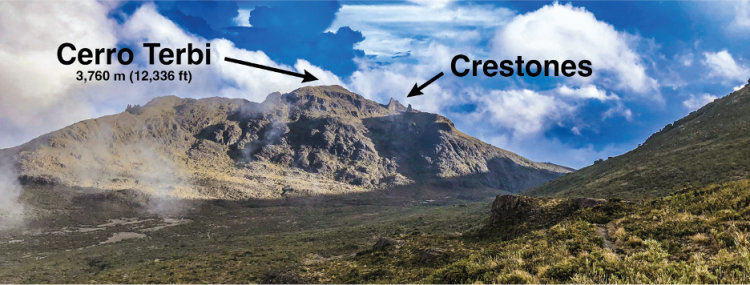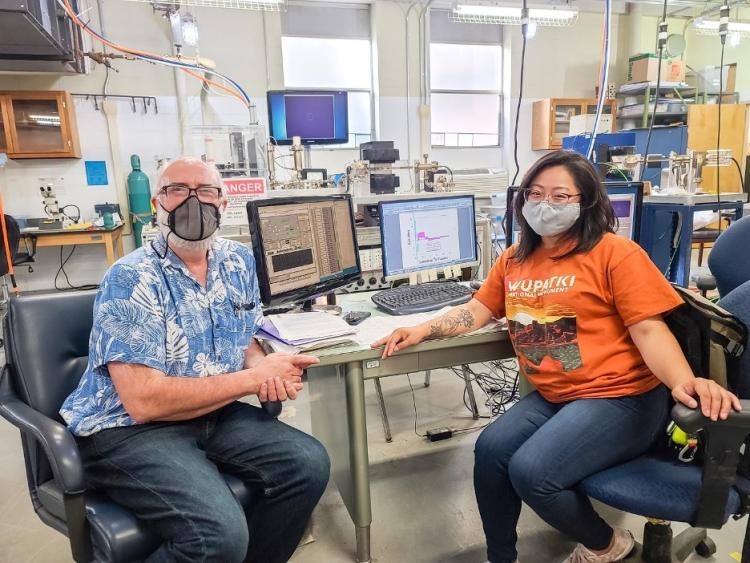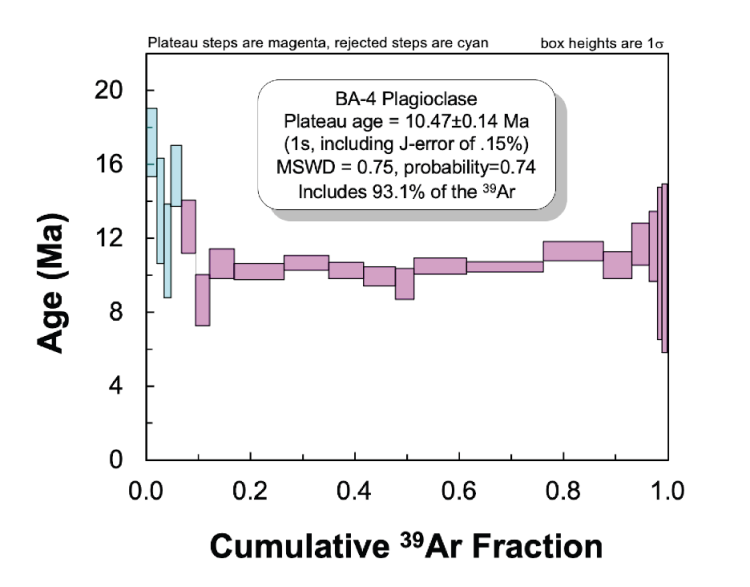Lisa Duong - Project Profile
2020 AGeS awardee
Lab: Auburn Noble Isotope Mass Analysis Laboratory
Lab Mentors: Dr. Willis Hames (Auburn University)
What scientific question(s) does your research address and what motivates this work?
The intraoceanic arc rocks across Costa Rica’s Talamanca Cordillera chronicle a fascinating story of geochemical crustal evolution. In this region, igneous rocks >10 Ma have chemical compositions typical of oceanic basalts and intra-oceanic arcs, whereas younger rocks <8 Ma have an average andesitic composition. Current models propose that bulk crustal composition for most intraoceanic arcs is basaltic and does not match either the geophysical structure or composition of continental crust. So, how did this oceanic arc transition to a juvenile continental arc? How long did this transition take? The development of silicic magmas with broadly continental characteristics remains a central frontier in understanding early continental crust generation. To address this longstanding crustal composition paradox, I used 40Ar/39Ar dating, major element, trace element, and petrographic analyses to document the geochemical evolution of Cerro Chirripó National Park, Talamanca Cordillera over the past ~12 million years.

Figure 1: Some of the most prominent peaks in Costa Rica’s Talamanca Cordillera reside in Chirripó National Park. This geologic landscape is a result of tectonic uplift from subduction processes involving the Panama microplate and Caribbean, Cocos, and Nazca plates. The timing of this uplift and the magmatic processes responsible for maturing this intraoceanic arc towards a continental character remain unclear and are the focus of this research. Pictured here: Cerro Terbi and Crestones are two of many field sites where hand specimens were collected for 40Ar/39Ar dating.
What chronometric tool did you employ and why?
My research utilized the 40Ar/39Ar technique. Argon-argon dating was the most favorable tool due to the presence of potassium-bearing mineral phases (i.e., micas, feldspars) in my volcanic and plutonic samples. Additionally, 40Ar/39Ar is known for its high precision and accuracy in calculating absolute ages of volcanic and crystalline materials. A step-heating procedure was used in my analyses to measure Ar as it degassed across various temperatures. Including all data obtained at each step on an age spectrum plot allowed a more robust calculation of plateau ages.

Figure 2: Three mineral phases were picked and sent out for irradiation. After three months of “cooling” from irradiation, these K-bearing mineral (i.e., biotite, plagioclase) and groundmass aliquots were ready for 40Ar/39Ar step heating experiments! At ANIMAL, samples were incrementally heated using a fully automated CO2 laser, extraction line, and GLM-110 mass spectrometer system.
What were some of the key takeaways of your research?
- The geochemical-temporal evolution of Cerro Chirripó National Park is divided into five stages.
- There is a time-dependent chemical variation in the volcanic and plutonic rocks at Cerro Chirripó National Park.
- The thickened arc crust contributes to magma stalling at deeper conditions, leading to fractionation processes that generate arc magmas with broad continental characteristics.

Figure 3: Dr. Willis Hames (Lab Director and AGeS Lab Partner) and I discussing the first batch of 40Ar/39Ar dating experiments in ANIMAL at Auburn University. Dr. Hames has been very supportive and encouraging throughout this process, helping to guide me through research knowledge that I did not know before beginning this project. Thank you, Dr. Hames and AGeS-Grad, for making my transition into geochronology research a positive and inspiring experience!

Figure 4: This age spectrum plot illustrates the laboratory step-heating 40Ar/39Ar ages of a plagioclase aliquot from a basaltic andesite sample collected at Chirripó National Park, Costa Rica. The steps colored in magenta were used to calculate the plateau age of 10.47±0.14 Ma.
What new experiences, opportunities, and collaborations did you gain as an AGeS-Grad awardee?
The AGeS-Grad program has positively impacted my career as a researcher. I finally had the opportunity to work in a geochronology lab and learn how to produce important data from start to finish. I am incredibly grateful to have gained a new mentor and collaboration with Dr. Willis Hames at the Auburn Noble Isotope Mass Analysis Laboratory (ANIMAL). This experience has also led me to a new collaboration with Costa Rica’s National Park Service, where the results of my research will be incorporated into new outdoor interpretive signage and park exhibits promoting local scientific, historical, and cultural awareness. I am now equipped with the confidence, knowledge, and experience to develop future geochronologic research that addresses our most fundamental challenges in the field of crustal evolution.
What is one piece of advice you have for future AGeS-Grad award applicants or awardees?
When looking for a geochronology lab mentor, find someone who is enthusiastic about your research as you are and is excited to share their knowledge! This is an excellent opportunity to develop a lasting connection that can be carried into your future career, even after completing the project.

